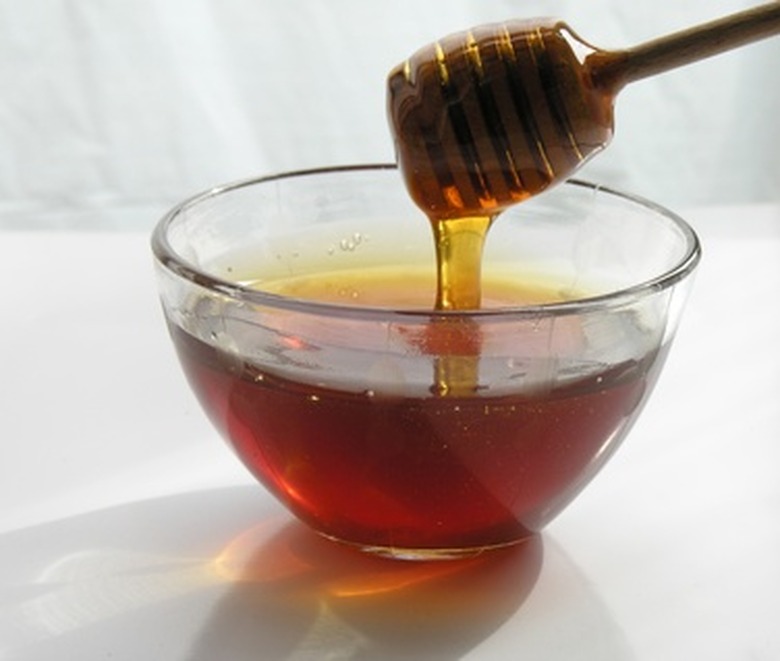How To Convert Stokes To Poise
Stokes and poise are both units of measure relating to fluid viscosity. Viscosity is the ability of a fluid (liquid or gas) to resist flow under an applied shear stress. Air and water have low viscosity and flow easily, whereas honey and oil are more viscous and have greater resistance to flow. Viscosity is typically defined in two forms: dynamic viscosity, commonly measured in poise; and kinematic viscosity, commonly measured in stokes. Conversion from dynamic viscosity (poise) to kinematic viscosity (stokes) is straightforward, provided that the fluid's density is taken into account, and is done so using the proper units.
Step 1
Determine the fluid density by consulting a standard reference table or handbook. Density is a measure of the fluid's mass per unit volume, and can vary with temperature and pressure. For example, at standard ambient pressure and temperature, the density of air is roughly 1.229 kg per cubic meter. The density of water at standard conditions is roughly 1000 kg per cubic meter.
Step 2
Use the proper units. Stokes and poise are both based on metric units of measure, using the CGS (centimeter, gram, second) system. Make sure that the value being used for fluid density is also in metric units, most commonly in the form of kg per cubic meter.
Step 3
Calculate the viscosity as follows. Kinematic viscosity (as in stokes) is equal to the dynamic viscosity (poise) divided by the fluid density, then multiplied by a numeric factor, A, which is used to account for the differences in measuring units:
Stokes = A x Poise / (Fluid Density) where A = 1000, if the fluid density is measured in kg per cubic meter.
For example, at normal atmospheric pressure and 15 C temperature, the dynamic viscosity of air is roughly 0.000173 poise. The density of air at these conditions is roughly 1.229 kg per cubic meter. By the formula given above, the kinematic viscosity of air is
Kinematic viscosity = 1000 x (0.000173 poise) / (1.229 kg per cubic meter) = 0.141 stokes
That is, at standard pressure and 15 C temperature, the dynamic viscosity of air is roughly 0.000173 poise, and the kinematic viscosity of air is roughly 0.141 stokes.
Warning
The factor A shown in the formula above is a correction used to account for difference in units. The value of 1000 shown above is valid only for cases where the fluid density is measured in kg per cubic meter. If other units for density (such as pounds per cubic inch) are used, the formula shown will not be valid.
Kinematic and dynamic viscosity are easily confused. When using tables or a reference book to find viscosity values, be certain to note whether the values shown are for kinematic or dynamic viscosity.
Viscosity and density for gases such as air are strongly dependent upon temperature. Be certain to consult a reputable source for these values.
References
Cite This Article
MLA
Purple, Adam. "How To Convert Stokes To Poise" sciencing.com, https://www.sciencing.com/convert-stokes-poise-6671717/. 24 April 2017.
APA
Purple, Adam. (2017, April 24). How To Convert Stokes To Poise. sciencing.com. Retrieved from https://www.sciencing.com/convert-stokes-poise-6671717/
Chicago
Purple, Adam. How To Convert Stokes To Poise last modified March 24, 2022. https://www.sciencing.com/convert-stokes-poise-6671717/
